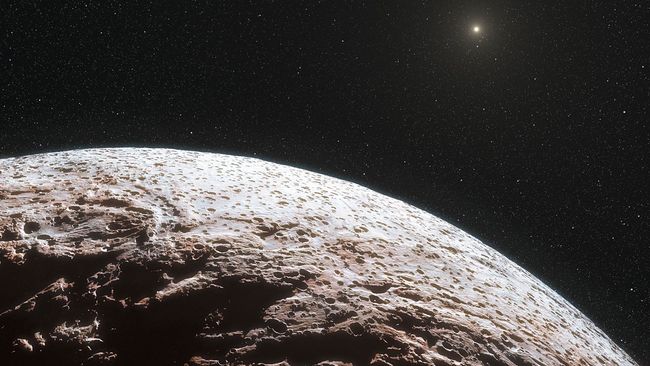Scientists have suggested that two dwarf planets in our solar system could potentially contain hidden oceans beneath their surfaces.
The enigmatic existence of a specific type of methane on Eris and Makemake may suggest the presence of warm, liquid-filled interiors.
The James Webb Space Telescope has revealed that Eris and Makemake, two dwarf planets in our solar system, may have sufficient geothermal activity to support liquid water oceans. Christopher Glein, a planetary geochemist from Texas’ Southwest Research Institute, noted the potential for this discovery, stating, “We see some interesting signs of hot times in cool places.” Eris, located deep in the Kuiper Belt, is a significant dwarf planet that led to Pluto’s reclassification in 2005. On the other hand, Makemake, discovered shortly after Eris, is slightly smaller in size compared to Eris and Pluto.

Their significant distance from the Sun — Eris is currently 14.4 billion kilometers (8.9 billion miles) away and Makemake is 7.7 billion kilometers (4.8 billion miles) away — results in limited knowledge about these distant dwarf planets.
Nonetheless, recent observations made with the James Webb Space Telescope have provided new insights into these worlds, revealing an unexpected source for the frozen methane-ice found on their surfaces.
“We have discovered indications that suggest thermal processes are responsible for generating methane from within Eris and Makemake,” stated Glein.
Methane is classified as a hydrocarbon, as it is created from a combination of hydrogen and carbon atoms (specifically, one carbon atom and four hydrogen atoms.) These atoms can exist in different forms, or “isotopes,” which have the same number of protons but varying numbers of neutrons.
If the methane present on the surfaces of these dwarf planets had originated from the primordial planet-forming disk that surrounded the young sun 4.5 billion years ago, it would exhibit a specific isotopic ratio between two hydrogen isotopes — regular hydrogen, with one proton and zero neutrons, and deuterium, with one proton and one neutron. However, the hydrogen isotope ratio detected by the JWST differs from the expected ratio if the methane were primordial, as seen in most comets.
“The deuterium/hydrogen ratio indicates that methane produced in the deep interior has a geochemical origin,” Glein explained. “Our data implies that high temperatures in the rocky cores of these worlds allow for the formation of methane. Molecular nitrogen may also be generated, and we have observed it on Eris.”
In essence, hydrothermal reactions or metamorphic processes involving heat and pressure acting on rocks likely produced the methane deep within Eris and Makemake. Subsequently, this methane would have risen to the surface through outgassing or possibly even volcanic activity.
A temperature exceeding 150 degrees Celsius (approximately 300 degrees Fahrenheit) is necessary for methane to form in this manner. These high temperatures are a result of radioactive isotopes present in the rocky cores of each dwarf planet, which emit heat as they decay.
Glein mentioned that the presence of hot cores could also indicate the potential existence of liquid water beneath the icy surface of Eris and Makemake. This raises the possibility that these dwarf planets may have habitable oceans.
According to another isotope ratio, the outgassing of methane onto the surface may have occurred until relatively recently in geological terms. This ratio compares carbon-12, which has 6 protons and 6 neutrons, to carbon-13, which has 6 protons and 7 neutrons.
Grundy, who led the initial JWST observations, stated that if Eris and Makemake have warm or even hot geochemistry in their rocky cores, cryovolcanic processes could transport methane to their surfaces, possibly in recent geological times. The discovery of a carbon isotope ratio suggests that these planets have undergone relatively recent resurfacing.
Interestingly, the models developed to explain the formation and outgassing of methane on Eris and Makemake could also be applicable to Titan, Saturn’s moon. Recent research indicated that methane and other carbon-based molecules, crucial for life, might not be able to reach Titan’s subsurface ocean after remaining on the surface for some time, where hydrocarbons are abundant. This raised doubts about the presumed habitability of Titan’s ocean. However, if methane and other gases can form geothermally within Titan’s rocky core, similar to Eris and Makemake, then the planet’s ocean could receive its supply of carbon chemistry from within rather than from the surface.
The results of the methane observations on Eris and Makemake are described in a paper published in the April 2024 issue of the journal Icarus.
Do not forget to share your opinion with us to provide you with the best posts !



0 Comments